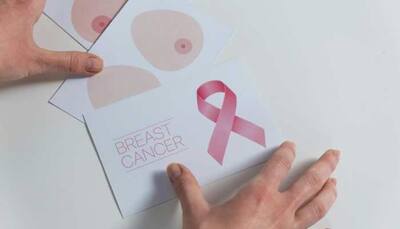In a recent study published in the Journal of the American Heart Association , researchers evaluated the individual and combined effects of workplace psychosocial stressors, such as effort-reward imbalance (ERI) and job strain, on atrial fibrillation (AF) incidence. Background AF is a frequent type of arthritis that primarily affects individuals over the age of 40 years, increasing their risk of stroke, heart failure, and other cardiovascular issues. Primary prevention is critical for reducing AF's public health and economic impact.
Psychosocial stresses at work, such as job strains and ERI, have been linked to an increased risk of coronary heart disease (CHD). Job strain implies that workers with high psychological demands and limited decision-making power are more prone to acquire stress-related health issues. However, there is scarce research on the negative consequences of these stresses on AF incidence.

Evidence shows that job-related stresses increase the risk of AF, although the effect of ERI and cumulative exposure is uncertain. About the study In the present prospective cohort study, researchers investigated whether psychosocial stress at workplaces from job strains and effort-reward imbalance increases AF risk. The Prospective Quebec Study on Work and Health (PROQ) study included 5,926 cardiovascular disease-free white-collar working individuals (3,021 females and 2,905 males) between 1991 and 1993, excluding those with a history of AF or CVD events and those who were retired or physically inactive.
Researchers followed the participants for 18 years, the first follow-up being between 1999 and 2001. Using Karasek's Job Content Questionnaire, researchers assessed job strain based on psychological demands and decision latitude. Psychological demands include excessive workload, task interruption, intense concentration, and conflicting demands.
Decision latitude refers to skill discretion and decision autonomy. Researchers measured work rewards using the French ERI scale, including esteem, promotion prospects and salary, and job security. They measured effort using the French version of the psychological demand scale of the Job Content Questionnaire.
Double exposure refers to individuals experiencing simultaneous work strain and ERI stressors. Researchers identified AF events from health databases covering universities and the International Classification of Diseases, ninth revision (ICD-9) and ICD-10 codes. Participants with AF incidences had at least one AF-related hospitalization, one emergency room record, or four or more physician consultations a year.
Related Stories Heart of the Matter: Early Diagnosis and Intervention in Heart Failure with Prof. Martin Cowie & Dr. Lisa Anderson Beckman Coulter Life Sciences and Illumina Accelerate Oncology Research with Launch of TruSight Oncology 500 DNA/RNA Application Prioritizing older individuals for COVID-19 boosters yields best public health outcomes, study finds Researchers used Cox proportional hazard regressions to calculate the hazard ratios (HR), adjusting for lifestyle and socioeconomic variables and clinical factors contributing to AF risk.
Sociodemographic variables included age, gender, and education. Lifestyle-related variables include physical activity, smoking status, and alcohol intake. Clinical risk-enhancing factors included body mass index (BMI), hypercholesterolemia, diabetes, CVD history in the family, and antihypertensive medications.
Researchers conducted sensitivity analyses, censoring at retirement and excluding AF events in the initial five years or those preceded by CHD or heart failure. They also conducted post-hoc analyses, assessing potential confounding by hostility, cynicism, and anger, separately considering individuals in passive and active jobs and those exposed to low reward without ERI exposure. Results The mean age of the study participants was 45 years at baseline; 47% had university-level education, 34% were physically inactive, and 17% smoked.
The mean BMI was 26 kg/m2; 14% were hypertensive, 6.0% used antihypertensive medications, 27% had hypercholesterolemia, and 2.0% had diabetes.
Exposure prevalence was 25% for ERI and 19% for job strain. Regarding exposure, 24% were exposed to ERI or job strain, whereas 10% were to both. There were 186 atrial fibrillation cases in 18 years, an incidence of 1.
7 per 1,000 individual years, and 34% of affected individuals (n = 63) had received CHD or heart failure diagnosis before AF occurrence. Workers with job strain (HR, 1.8) and ERI (HR, 1.
4) exposures showed AF risk elevations of 83% and 44%, respectively. Double exposure was related to a 97% increase in AF risk (HR, 2.0).
Adjusting for lifestyle, sociodemographic, and clinical risk factors and sensitivity analyses yielded similar results. The relationship between passive (HR, 1.1) and active jobs (HR, 1.
2) with AF incidence did not differ significantly. The cumulative AF incidence was slightly higher for individuals exposed to ERI or job strain aged below 60 years. The cumulative incidence associated with combined exposure increased more steeply compared to reaching a similar progression after 60 years.
The study showed that psychosocial stresses at work, such as job pressure and ERI, increase AF risk, separately or in conjunction. Preventive methods that address these psychological stresses at workplaces may reduce the AF burden. The sensitivity analyses revealed that the precipitating influence of other cardiovascular disorders, such as coronary heart disease and heart failure, cannot explain the effect of psychological stresses at work on AF incidence.
A clinical understanding of these workplace stresses and their negative impact on cardiovascular health is required. Edwige Tiwa Diffo, MSc; Mathilde Lavigne-Robichaud, PhD; Alain Milot, MSc, MD; Chantal Brisson, PhD; Mahée Gilbert-Ouimet, PhD; Michel Vézina, MD; Denis Talbot, PhD; Xavier Trudel, PhD. Psychosocial Stressors at Work and Atrial Fibrillation Incidence: An 18-Year Prospective Study, J Am Heart Assoc .
2024;13:e032414. DOI: 10.1161/JAHA.
123.032414 https://www.ahajournals.
org/doi/suppl/10.1161/JAHA.123.
032414.


















